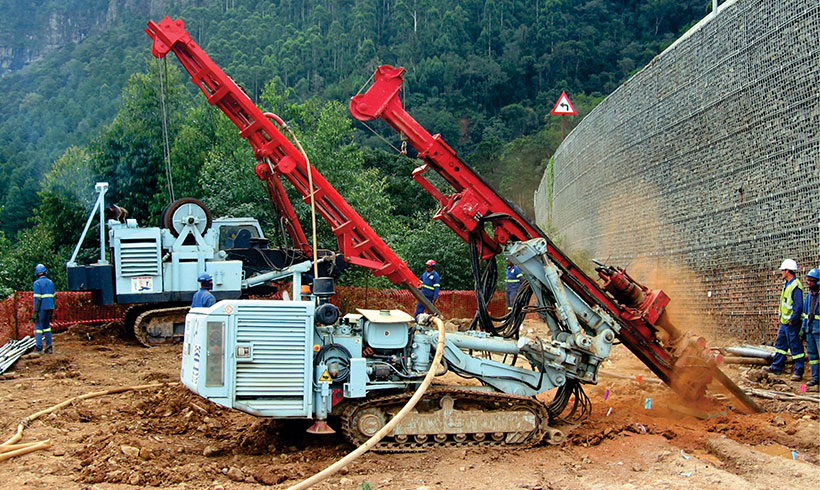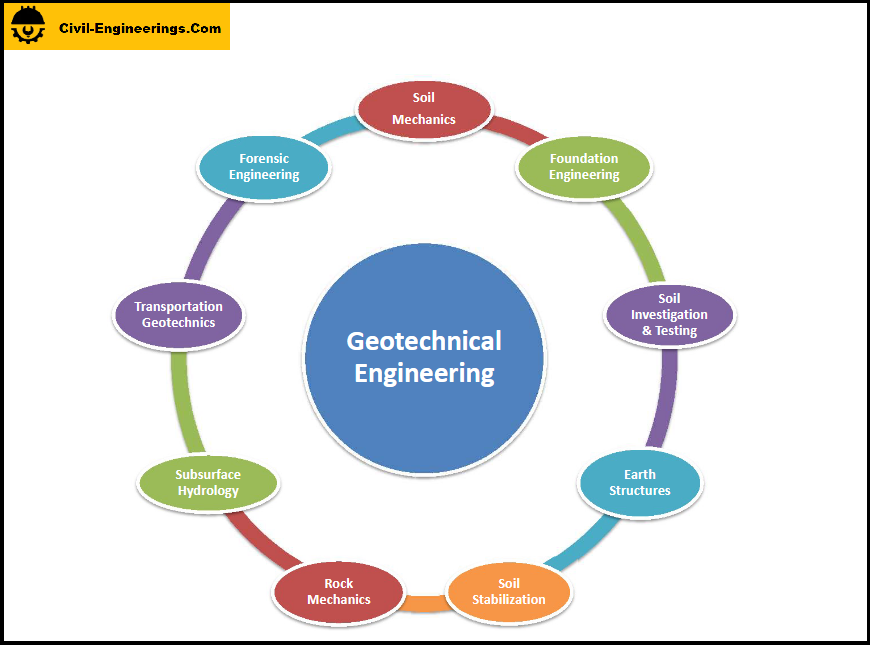Not known Details About Geotechnical Engineering For Construction Projects
How Geotechnical Engineering For Construction Projects can Save You Time, Stress, and Money.
Table of ContentsNot known Facts About Geotechnical Engineering For Construction ProjectsSome Known Incorrect Statements About Geotechnical Engineering For Construction Projects Facts About Geotechnical Engineering For Construction Projects UncoveredRumored Buzz on Geotechnical Engineering For Construction ProjectsUnknown Facts About Geotechnical Engineering For Construction ProjectsNot known Incorrect Statements About Geotechnical Engineering For Construction Projects More About Geotechnical Engineering For Construction Projects
and Kovacs, W. (1981 ), An Introduction to Geotechnical Engineering, Prentice-Hall, Inc. Deep Check Tech (2023 ): Deep Scan Tech discovers concealed frameworks at the website of Denmark's tallest building. "Geofrost Coring". GEOFROST. Recovered 20 November 2020. Han, Jie (2015 ). Concepts and Practice of Ground Enhancement. Wiley. ISBN 9781118421307. RAJU, V. R.Ground Renovation Technologies and Case Histories. Singapore: Research Study Posting Services. p. 809. ISBN978-981-08-3124-0. Ground Improvement Principles And Applications In Asia. Pariseau, William G. (2011 ). Style analysis in rock technicians. CRC Press. Hegde, A.M. and Palsule P (Geotechnical Engineering for Construction Projects).S. (2020 ), Performance of Geosynthetics Reinforced Subgrade Subjected to Repeated Car Loads: Speculative and Mathematical Studies.
Cengage Understanding, Stamford, 666 p. Atkinson, J., 2007. The mechanics of dirts and structures. The Observational Approach in ground design concepts and applications.
Indicators on Geotechnical Engineering For Construction Projects You Should Know
Lab and area testing plays a crucial duty in this process. By removing samples from the planet's subsurface and applying a collection of tests, geotechnical engineers can forecast the behavior of dirt layers and evaluate their viability for numerous construction endeavours. The significance of geotechnical design in civil design can not be overstated, attributable to numerous aspects: The initial action in any type of geotechnical research involves establishing the dirt kind at the building and construction website.
The structure acts as the bedrock of any kind of construction project. Selecting the suitable foundation kind is a decision that hinges on the extensive analysis provided by geotechnical design.

Geotechnical site investigation is a crucial action in the preparation and execution of any type of building job. It entails the collection and evaluation of information associated with the physical residential properties of dirt and rock under a recommended building and construction website. This info is crucial for the style and building of safe, secure, and lasting frameworks.
Geotechnical Engineering For Construction Projects Fundamentals Explained
, also understood as subsurface expedition, involves a collection of tasks intended at establishing the soil, rock, and groundwater conditions at a building website. The primary purposes are to identify prospective geotechnical dangers, analyze the engineering residential or commercial properties of subsurface products, and supply referrals for the design and building of foundations, keeping walls, and other structures.
This might consist of geological maps, airborne pictures, previous examination records, and historic information. The workdesk research aids in identifying potential geotechnical issues and planning the succeeding fieldwork. Following the desk study, a website reconnaissance is performed to aesthetically evaluate the website and its surroundings. This entails observing the topography, water drainage patterns, existing frameworks, vegetation, and any indications of instability or erosion.
All about Geotechnical Engineering For Construction Projects
Shallow examination pits are dug deep into to straight observe and sample the soil and rock. This technique serves for studying the top layers of the subsurface and determining near-surface hazards. Non-invasive geophysical approaches, such as seismic refraction, ground-penetrating radar (GPR), and electrical resistivity tomography (ERT), are used to map subsurface problems and discover abnormalities.
Soil and rock examples gathered throughout the field examination go through research laboratory screening to determine their physical and mechanical residential properties. Common lab tests consist of grain dimension analysis, Atterberg limitations, compaction examinations, triaxial shear tests, and consolidation tests. These examinations provide vital data for geotechnical analysis and layout. The information collected from the desk study, website reconnaissance, area examination, and laboratory testing are analyzed and translated to establish a comprehensive understanding of the subsurface problems.
The primary benefit of geotechnical site examination is ensuring the safety and stability of structures. By recognizing the subsurface problems, engineers can make structures and various other architectural components that Website can withstand the loads and environmental forces they will certainly go through. This lessens the danger of settlement, decrease, and architectural failing.
Some Known Questions About Geotechnical Engineering For Construction Projects.
This makes sure reliable and safe building and construction practices. Geotechnical site examinations are usually needed by constructing codes and regulations.
This info is very useful for task managers, designers, and service providers in developing practical schedules, budget plans, and backup strategies. Geotechnical Engineering for Construction Projects. High-Rise Structure in a Coastal AreaIn a coastal city, a high-rise property structure was intended on a site with believed loosened sand deposits hop over to here and a high water table. A comprehensive geotechnical investigation, including borehole boring, CPT, and geophysical studies, was performed
Fascination About Geotechnical Engineering For Construction Projects
Based on these findings, the foundation style was customized to include deep heap structures expanding into stable strata, and ground improvement strategies, such as vibro-compaction, were applied to alleviate liquefaction risks. This proactive strategy made sure the security and security of the building while staying clear of pricey post-construction remediation. Infrastructure Growth on a Sloping TerrainA significant facilities project, entailing the building and construction of a highway and bridges, was intended on a sloping terrain with high slopes.

The Leaning Tower of Pisa (Italy), a famous architectural wonder, is notorious for its unintentional tilt from significant geotechnical issues. The tower's structure was inadequately created to deal with the soft, unpredictable soil beneath it, leading to irregular settlement and its distinctive lean. Our globe is dotted with excellent facilities projectsfrom towering high-rise buildings to sprawling bridgesall standing statement to the evolution of the various building and construction equipment and techniques readily available.
Geotechnical engineering is a specialized area within civil design that focuses on researching the behavior of earth products. This branch delves deep into the groundinvestigating just how the dirt, rock, and groundwater at a construction website can influenceand be affected bythe infrastructure that we set up on and right into them. Prior to a single block is laid or a concrete foundation poured, geotechnical designers probe right into the earthgathering important data regarding the website's dirt make-up, rock framework, and groundwater levels.
The Best Guide To Geotechnical Engineering For Construction Projects

is a tool utilized to examine the honesty and load-bearing ability of heaps throughout installation, leveraging the principle of wave proliferation. It enhances building efficiency by providing real-time evaluations, therefore making certain secure and reliable pile foundations. Among the useful applications of geotechnical design includes deciding and carrying out the ideal techniques for foundation building.
Stack driving represents greater than the simple act of placing structural elements into the ground. However, it is a very carefully coordinated procedure of moving a structure's load past the much less stable soil layers more detailed to the surfacedown to the much more substantial strata that exist beneath. When it comes to pile driving, consider just how geotechnical engineers expertly utilize this technique to uniformly distribute the framework's weight.